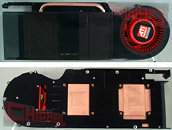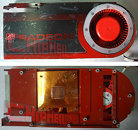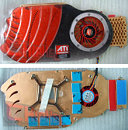Sunday, May 25th 2008

ATI Radeon HD 4800 Series Coolers Pictured
Various photos of the coolers that will prevent ATI's next gen Radeon HD 4800 series cards from overheating have recently emerged over the Internet. Below are the picture of ATI Radeon HD 4870 X2, Radeon HD 4870 and Radeon HD 4850 respectively.
Sources:
Chiphell, TechConnect Magazine



42 Comments on ATI Radeon HD 4800 Series Coolers Pictured
bryan d
Or:
Notice this is zoomed-in to illustrate the actual surface of lapped surfaces at a minute level.
bryan d
Maybe the thermal pad worked better in your situation, but it was only due to a poor design that did not allow for an IC to metal contact. The use of "high end" thermal pads are only necessitated due to poor design... which the HD4850 carries as evident to having to resort to thermal pads for the RAM.
If you still doubt what I am saying, why call up Thermalright, Swictech, Scythe, Arctic Cooling, etc, etc, and ask them which is preferable between thermal paste or a pad?
I just do not want individuals new to computers coming to this great forum, and be misinformed. :)
bryan d
4850 - $229
Both FTW :rockout: